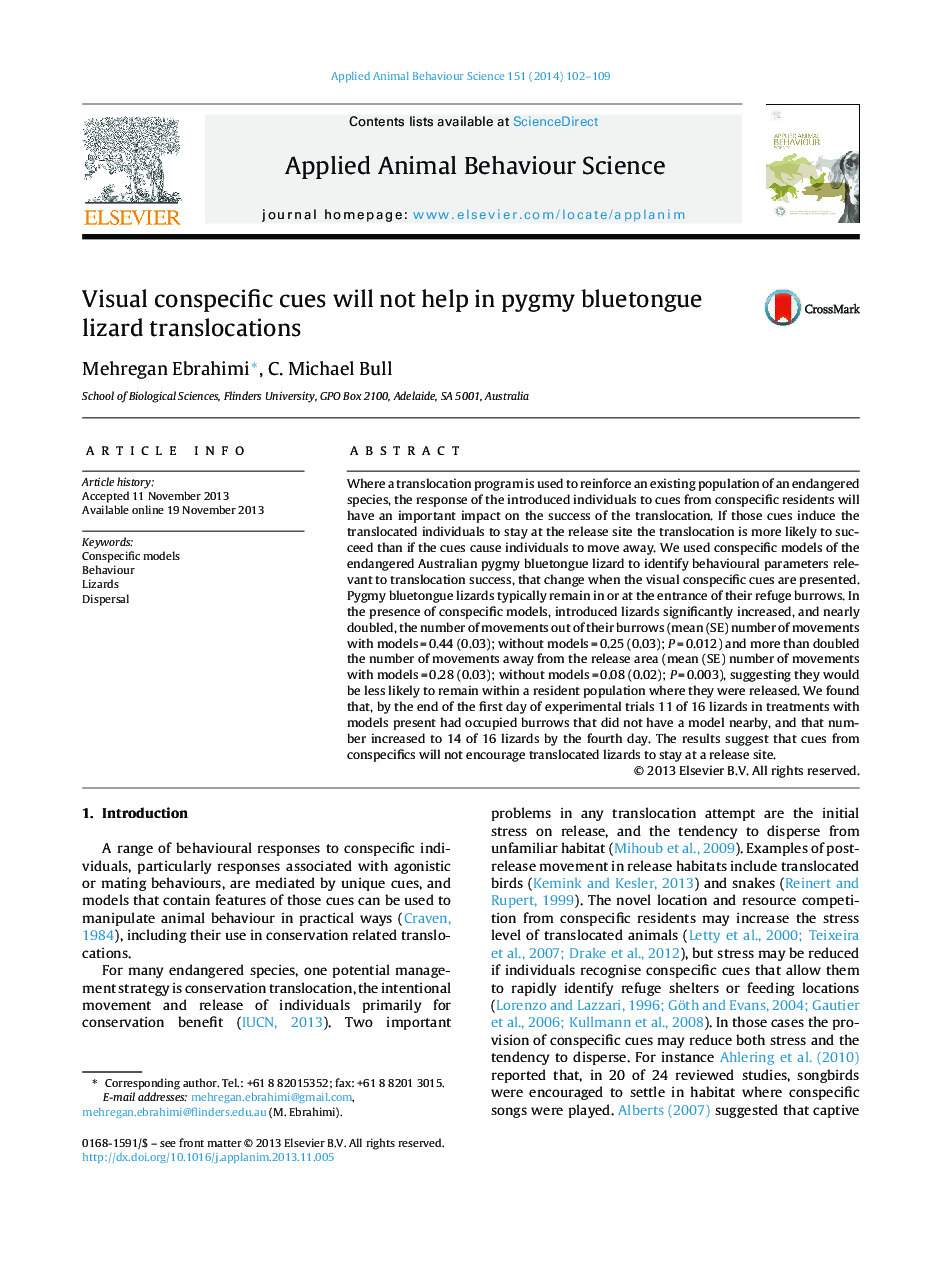| کد مقاله | کد نشریه | سال انتشار | مقاله انگلیسی | نسخه تمام متن |
|---|---|---|---|---|
| 4522624 | 1625355 | 2014 | 8 صفحه PDF | دانلود رایگان |
Where a translocation program is used to reinforce an existing population of an endangered species, the response of the introduced individuals to cues from conspecific residents will have an important impact on the success of the translocation. If those cues induce the translocated individuals to stay at the release site the translocation is more likely to succeed than if the cues cause individuals to move away. We used conspecific models of the endangered Australian pygmy bluetongue lizard to identify behavioural parameters relevant to translocation success, that change when the visual conspecific cues are presented. Pygmy bluetongue lizards typically remain in or at the entrance of their refuge burrows. In the presence of conspecific models, introduced lizards significantly increased, and nearly doubled, the number of movements out of their burrows (mean (SE) number of movements with models = 0.44 (0.03); without models = 0.25 (0.03); P = 0.012) and more than doubled the number of movements away from the release area (mean (SE) number of movements with models = 0.28 (0.03); without models = 0.08 (0.02); P = 0.003), suggesting they would be less likely to remain within a resident population where they were released. We found that, by the end of the first day of experimental trials 11 of 16 lizards in treatments with models present had occupied burrows that did not have a model nearby, and that number increased to 14 of 16 lizards by the fourth day. The results suggest that cues from conspecifics will not encourage translocated lizards to stay at a release site.
Journal: Applied Animal Behaviour Science - Volume 151, February 2014, Pages 102–109
